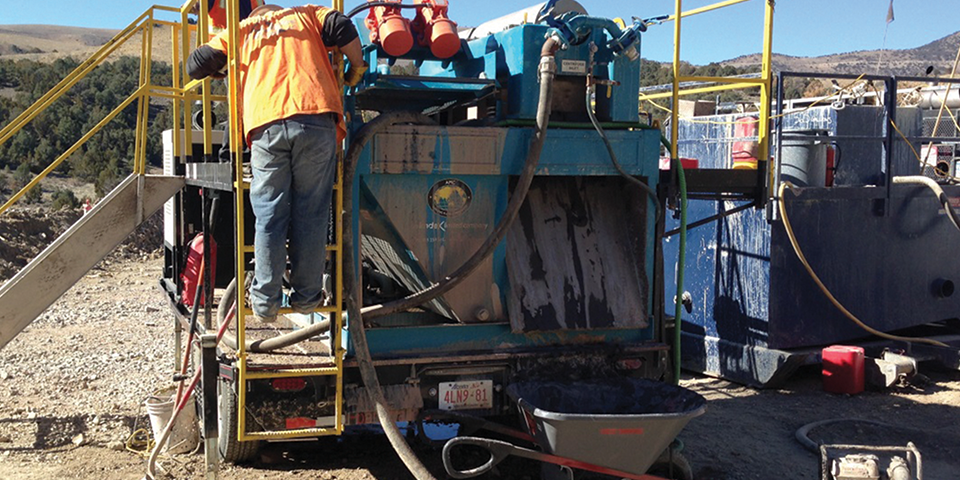Drill Rig 1
When AMC’s SRU™ arrived at the first drill rig, the crew had just finished drilling out a cement plug. The mud was dumped to combat cement contamination in the fluids.
Previously the crew was forced to dump 3,500 gallons of fluids twice a shift. This process involved several hours downtime mobilising trucks, assisting with the vac-out of the tanks and sump, then remixing new mud before recommencing drilling. 1 – 2 loads of water also needed to be carted to site, which took approximately 1 – 2 hours depending on availability of trucks and traffic at the water site.
Rig and SRU™ Set-up on Site
- Rotary core rig – exploration drilling
- Drilling in reddish brown mud rock
- Mud tank volume 3,500 gallons, plus sump volume of 500 gallons
- Waste fluids were set up to drain into existing sump pit
- SRU™ set up to receive fluids from existing sump pit
- Fluid was pumped into SRU™ centrifuge with a Seepex pump – at approximately 18 gallons per minute
- The cleaned fluid flowed into the SRU™ mixing tank, then it was pumped back into the rig fluids tank
- For ease of operation two gas trash pumps were used. The first fed fluid from the sump pit into the SRU™ shaker tank. The second pumped fluid from the SRU™ mixing tank back to the drill rig fluids tank
- Employees were provided with a SRU™ induction and experienced crews were quick to make the equipment run at optimal performance.
Following a shift of operation with the SRU™, the drillers were impressed with the unit’s performance – particularly its ability to reduce their time spent dumping fluid and carting water.
After four days of 24 hour operation, the drill was still using the same base fluids. During that period, approximately 2,000 gallons (less than one water truck) of fluid were added to account for hole volume. Under similar conditions, eight truck loads of water would have been required. Polymer top-ups were also added to replace lost polymers on cuttings.
“We are still using the same mud after four days. That has never happened out here before. We have used only four bags of mud over the past few days – typically we would have used 18 bags per day.” - Driller
